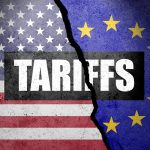New Levies Hit Home Goods
President Donald Trump announced new tariffs on housing-related goods that could make remodeling and decorating significantly more expensive for Americans already struggling with high living costs. The new measures impose a 30% levy on upholstered furniture and a 50% tariff on kitchen cabinets and bathroom vanities.
For many households, this adds to the strain of stagnant wages, rising mortgage rates, and limited housing supply. “People are quite literally stuck in place,” said Maggie Kulyk of Chicory Wealth. “Now they want kitchen cabinets. Well, they’re going to pay more and they might not get them for a long time.”
Impact on Remodeling Costs
Renovation expenses are expected to surge. Earlier estimates suggested tariffs could raise remodeling costs by as much as 25%, but with a 50% levy on cabinets and vanities, the price impact may climb even higher. Average cabinet projects already run from $1,978 to $11,044, according to Angi, and labor shortages could add further delays and costs.
American cabinet manufacturers support the tariffs, with trade groups advocating for even higher barriers to imports. They argue that 250,000 domestic jobs are at risk as low-cost goods from Mexico, Vietnam, and Malaysia enter the U.S. market.
Broader Economic Risks
Official figures show the economy expanding at a 3.8% annualized pace in the second quarter, supported by strong consumer spending. But analysts warn that higher-income households are driving much of that resilience, while middle- and lower-income Americans are falling behind.
Credit scores are slipping, student debt is weighing heavily, and inflation-adjusted wages remain under pressure. “We’re living in a dangerous situation, both politically and economically,” Kulyk warned, suggesting that rising costs for basics like housing could fuel unrest.
Industry in Turmoil
The home goods sector is facing severe disruption. Barbara Karpf, president of DecoratorsBest, described the situation as “total turmoil.” Some companies are halting product lines, laying off workers, or shutting down operations as they struggle with supply chain bottlenecks and the high cost of machinery already hit by earlier tariffs.
Even businesses that are surviving are shelving growth plans. “The randomness of it and the lack of notice — this is not a way to do business,” Karpf said. Industry leaders caution that reshoring production will take years, not months, leaving consumers and companies in limbo.






